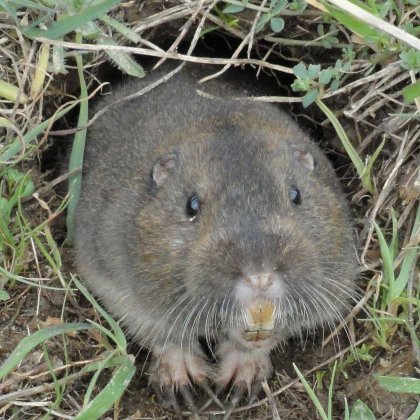
The evolutionary secrets of an extraordinary North American rodent are being uncovered by University of Queensland School of Biological Sciences researchers.
The pocket gopher features prominently in a study of how mammals’ skulls can evolve over a short time frame to cope with environmental conditions.
UQ scientist Dr Vera Weisbecker said that through different evolutionary pathways, pocket gophers obtained a skull that allowed them to dig in hard soils.
“The research findings suggest that skull adaptation can happen very quickly,” Dr Weisbecker said.
“The result is that many very closely related gopher species or subspecies can be found in close proximity to each other, but separated by different soil type and different skull shape.”
Fulbright scholar and UQ PhD student Ariel Marcy is studying how differences in digging adaptations gives certain species an advantage in specific soil types.
Ms Marcy said each gopher could move 1 tonne of soil per hectare per year, using 360 to 3400 times more energy than walking the same distance.
“Because the underground habitat presents such intense selection pressures, digging animals make great models to study evolution in general,” Ms Marcy said.
“Previously it was thought that closely related species evolved similar skull shapes via the same evolutionary pathways.
“Our study highlights a surprising mechanism for the evolution of the mammalian skull on a short time scale because two closely related species appear to have evolved similar shapes via different evolutionary pathways.
“It is also particularly relevant for understanding how ecological habitats can be re-populated after extinctions by related species.”
Ms Marcy said the findings supported the idea of focusing limited conservation funds at the genus level for some mammals rather than on individual species (the genus level is one taxonomic rank higher than species level).
“Pocket gophers use forelimbs and teeth to move soils to a depth of 1 metre - however, most of their work takes place 20cm below the ground as they forage for food,” she said.
“In comparison, gophers digging almost exclusively with their claws are generally only able to dig in softer soils.
Ms Marcy said this rodent genus was one of the most structurally diverse.
“They are found across a wide diversity of soils, from sandy and silty, to heavy clay,” she said.
“We studied 10 species or even distinct subspecies of gophers with over 420 skulls using a network of points (in an analysis adapted from engineering) to measure shape variation.”
The research, partly funded through an Australian-US Fulbright scholarship, is published in BMC Evolutionary Biology.
See Ariel discuss her research recorded here and witness the pocket gopher in action.
Media: Dr Vera Weisbecker, v.weisbecker@uq.edu.au, www.weisbeckerlab.com.au, +61 7 336 57071 or 0487 385 214 or Ariel Marcy 0473 087 727, aemarcy@gmail.com, @aemarcy (Twitter)
.jpg)









